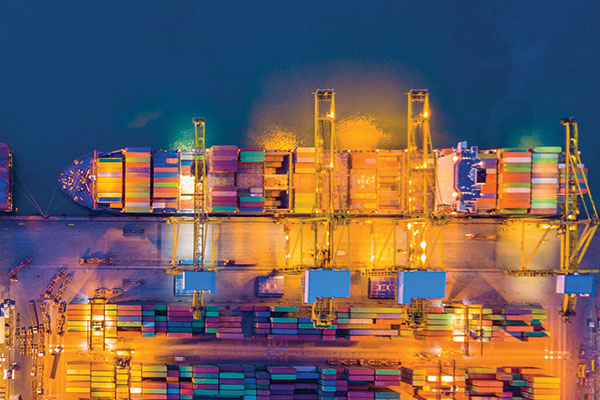Panjiva reports continued shipment growth to start 2019
Data issued this month by global trade intelligence firm Panjiva pointed to continued growth for United States-bound waterborne shipments.
January shipments, at 1,061,288, were up 5.1% annually, growing for the 23rd consecutive month with Panjiva noting that this tally includes a 5.8% annual increase in containerized freight, which “will do little to alleviate the congestion being felt at U.S. ports.
Panjiva said that U.S.-bound imports out of China were only up 0.7%, which is down significantly from a 12% annual gain in the fourth quarter of 2018. The company added that this decrease is due, in large part, to what it called the tariff ceasefire inked by the U.S. and China in early December, which, it said, reduced the urgency to build up inventories. And it also observed that the reason the slowdown in imports out of China was not steeper could be attributed to the earlier Lunar New Year this year compared to 2018, coupled with the short period of time between the announcement of the tariff ceasefire and its March 1 deadline, which is rapidly approaching.
In an interview, Panjiva Research Director Chris Rogers said the January numbers would have been higher if the timing of the Lunar New Year was later.
“It is inevitable we will see a slowdown in February, partly because of the timing of the Lunar New Year, as well as most stakeholders over the last few weeks working on the basis of the U.S. and China wanting to strike a deal, whether it happens by March 1 or if there are a few days or weeks of wiggle room, as President Trump has indicated could be the case.”
But with volumes from China down, Rogers said there has been rapid growth in imports from other countries and regions, including Taiwan (up 9%); Korea (up 15%); and Europe, where growth has been on the low end (up 7%).
Some of the drivers for those gains identified by Rogers are an economic slowdown that has yet to occur and strong U.S. consumer spending, even though consumer sentiment is down.
“There is also a degree to which warehouses were filling up with products from China and did not have as much room or maybe de-emphasized the less timely shipments from other countries and probably helped the shipment numbers as well,” said Rogers.
On a product shipment level, Rogers said it is apparent that there are some emerging weaknesses from a fundamental perspective.
One area where that was the case was shipments of cars and related components compared to January 2018, which he said may be a reflection of weak automobile sales in the U.S. amid concerns over tariffs.
Looking ahead, Rogers said there are a few potential scenarios for what happens next, as it relates to global trade and freight flows.
“If a trade deal is struck, it could be business as usual,” he said. “In that instance, you might see a bit of a slowdown in shipping, as there is a lot of excess inventory that needs to be worked through. There cannot be a pull forward without a push back. Beyond that, assuming a deal gets done, it could be back to normal. Business and consumer confidence is still positive, and the U.S. economy remains in pretty good health, so, at least in terms of the U.S.-China trade war, there is not too much to worry about, as there could be a recovery later in the year.”
A major challenge for the global shipping sector, according to Rogers, is port congestion, adding a slowdown from China could help to remedy that, noting that some of that seems to be structural rather than temporary and could prove to be a challenge later in the year.
“Should the U.S. and China fail to reach a deal and tariffs subsequently go up, there could be a mini-rush [in imports] and a compression in trade between the U.S. and China for an extended period,” he said. “But if something is not being bought from China, there could be a pickup in shipments from other countries instead. Americans will still want things like cheap shoes and cheap cars. If they don’t come from China, they will come from somewhere else. Shipping volumes may see a dip but could be resilient after that.”
Citing a recent Panjiva survey, Rogers said that before tariffs were implemented 50% of companies were already planning to shift manufacturing out of China because of rising costs, with that number rising to 80% because of tariffs. What’s more, the survey found that only 30% of companies were previously planning to move more production to the U.S., which only went to 36% post-tariffs.
“People were already planning to move out of China and have not really moved back to the U.S.,” he said. “All the tariffs would do is kind of decelerate that process…with things eventually getting back to normal.”













